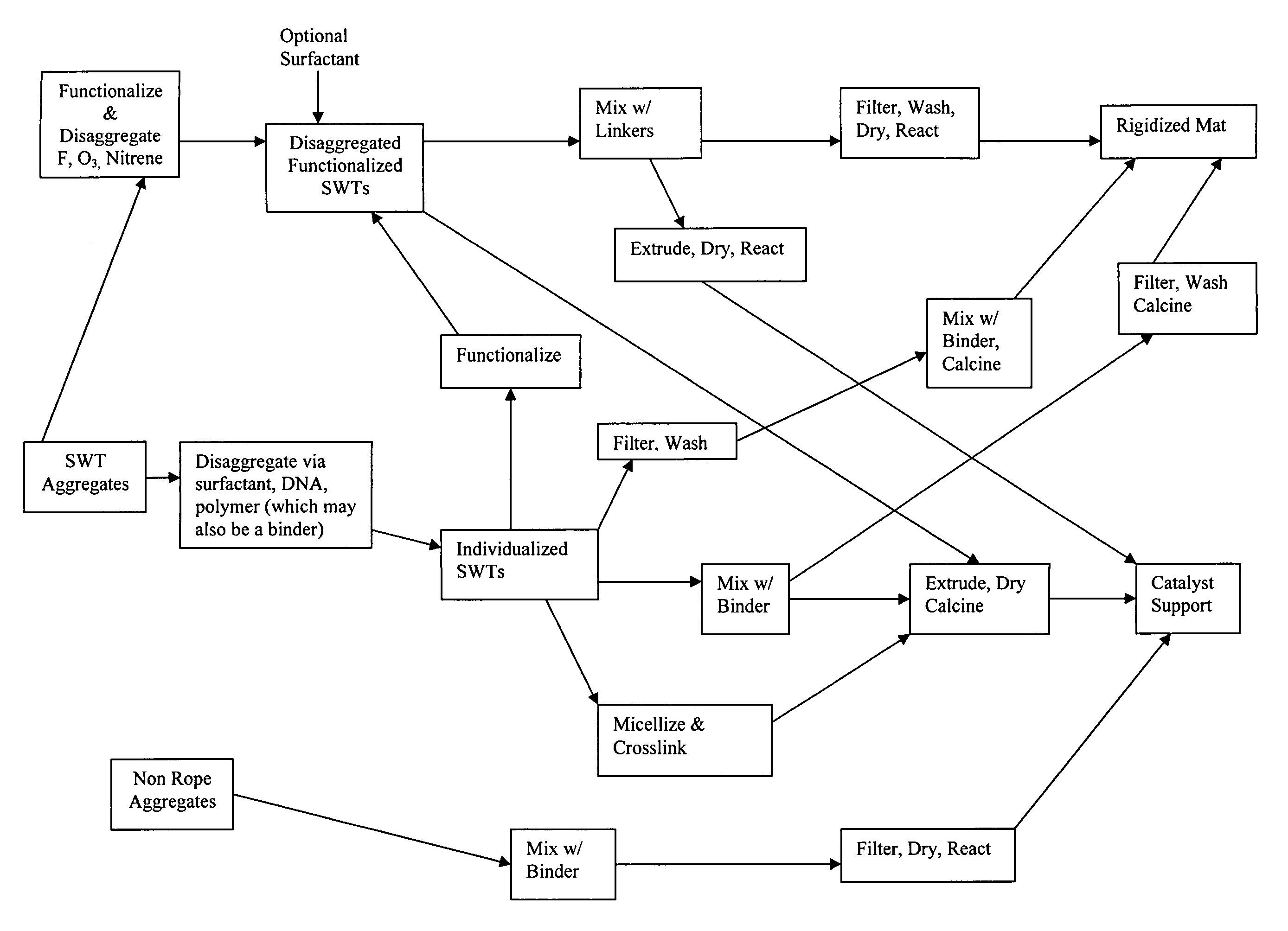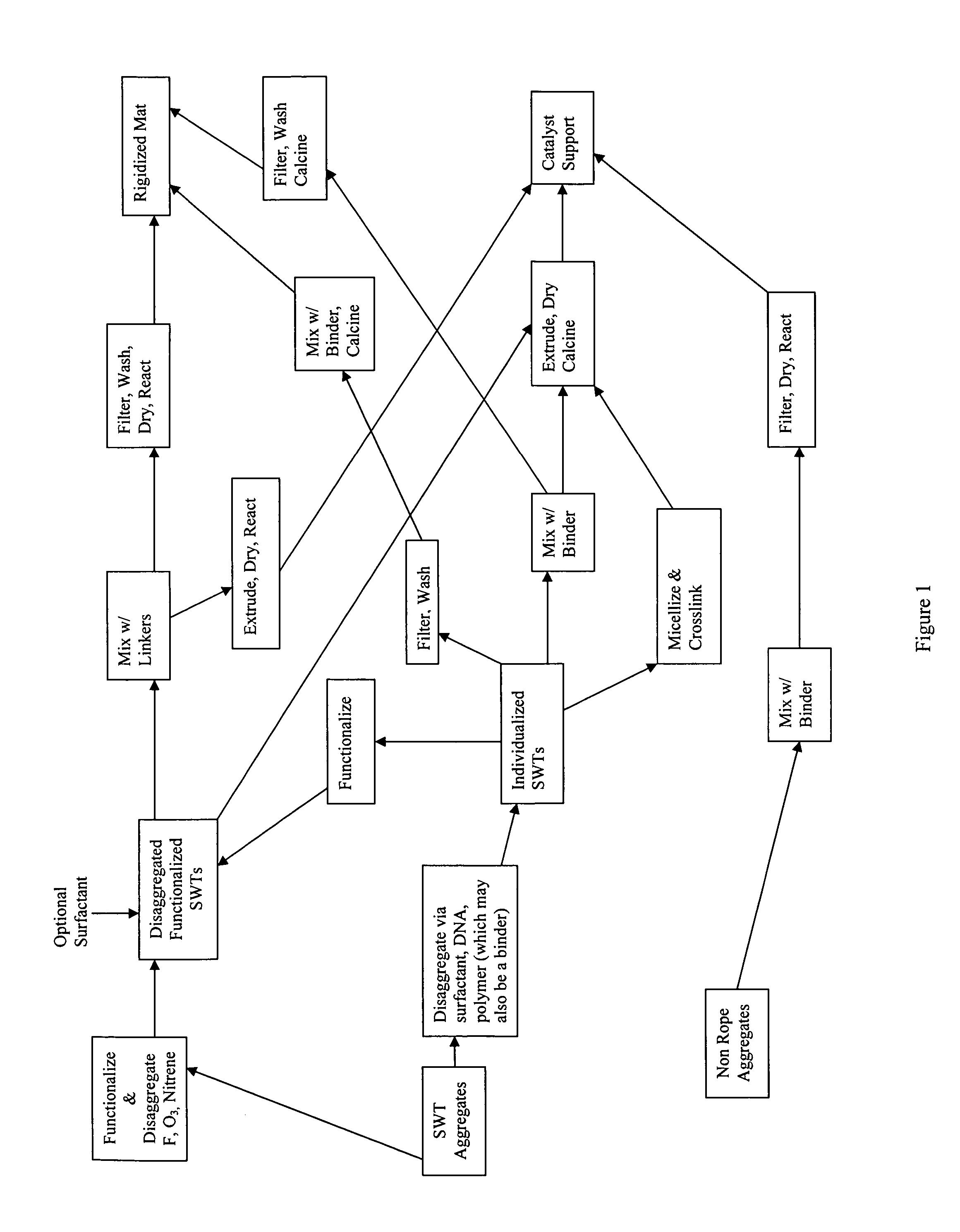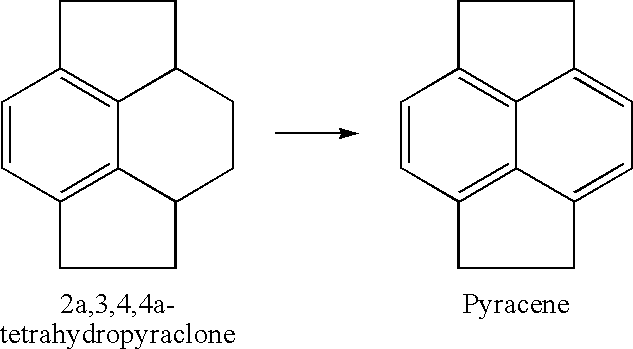Method for preparing catalyst supports and supported catalysts from single walled carbon nanotubes
a technology of carbon nanotubes and supports, which is applied in the direction of catalyst activation/preparation, physical/chemical process catalysts, metal/metal-oxide/metal-hydroxide catalysts, etc., can solve the exact chemical nature of the active catalyst component within the reaction zone that is difficult to determine, and the pores are difficult to access, so as to achieve a high-accessible surface area
- Summary
- Abstract
- Description
- Claims
- Application Information
AI Technical Summary
Benefits of technology
Problems solved by technology
Method used
Image
Examples
example 1
Dissaggregation of SWNTs with a Surfactant
[0129]Single-walled nanotubes made from a method described in U.S. Pat. No. 6,827,919 are first treated with 20% HCl to remove any residual metal catalysts responsible for making such material. The treated material is captured on a filter and washed with DI water until the filtrate is neutral pH. The washed nanotubes are then suspended in 1 wt. % aqueous solution of sodium dodecylsulfate (SDS) and subjected to high shear using a probe sonicator for four hours to generate mostly individualized single-walled nanotubes (Sample A).
example 2
Mixing Disaggregated SWNTs with Aqueous Binder
[0130]Disaggregated SWNTs (Sample A of Example 1) are concentrated by centrifugation to a level of 2 wt %. Poly(acrylic acid-co-maleic acid), 50% solution in water is added to obtain a 1:1 ratio of polymeric binder to nanotubes. The resulting paste like material is blended in a Retsch mortar mill to a uniform consistency (Sample B). The uniform nanotube paste, Sample B, is extruded through a die with a circular aperture forming a strand. The stand is cut to shorter lengths and dried at 200° C. in air overnight after which it is calcined at 600° C. in an argon atmosphere for 6 hours to produce rigid, porous catalyst support particles.
example 3
Dissaggregation of SWNTs with a Polymeric Binder
[0131]Single-walled nanotubes made from a method described in U.S. Pat. No. 6,827,919 are first treated with 20% HCl to remove any residual metal catalysts responsible for making such material. The treated material is captured on a filter and washed with DI water until the filtrate is neutral pH. The washed nanotubes are then suspended Di water to a level of 0.05 wt % in 1 wt. % aqueous gum Arabic and then subjected to high shear using a probe sonicator for four hours to generate mostly individualized single-walled nanotubes (Sample C).
PUM
| Property | Measurement | Unit |
|---|---|---|
| surface area | aaaaa | aaaaa |
| surface areas | aaaaa | aaaaa |
| pore diameters | aaaaa | aaaaa |
Abstract
Description
Claims
Application Information
 Login to View More
Login to View More - R&D
- Intellectual Property
- Life Sciences
- Materials
- Tech Scout
- Unparalleled Data Quality
- Higher Quality Content
- 60% Fewer Hallucinations
Browse by: Latest US Patents, China's latest patents, Technical Efficacy Thesaurus, Application Domain, Technology Topic, Popular Technical Reports.
© 2025 PatSnap. All rights reserved.Legal|Privacy policy|Modern Slavery Act Transparency Statement|Sitemap|About US| Contact US: help@patsnap.com



